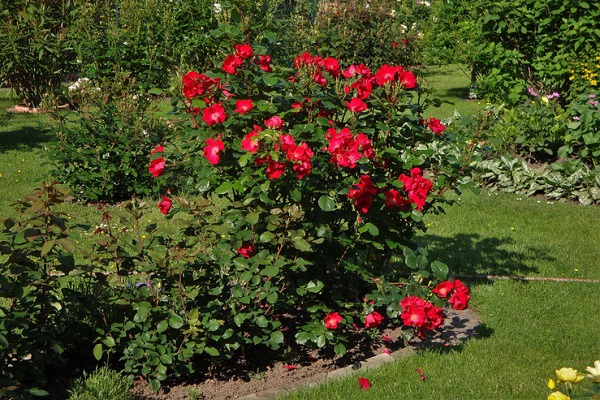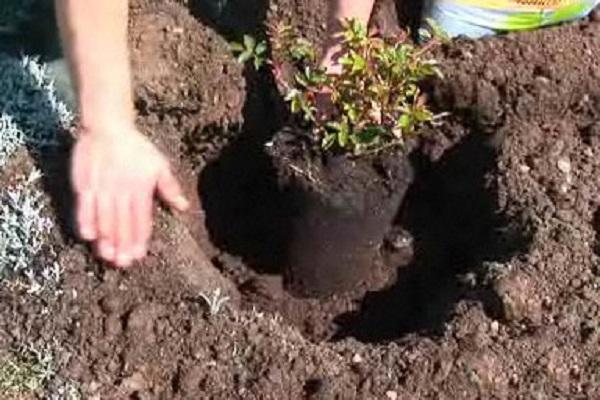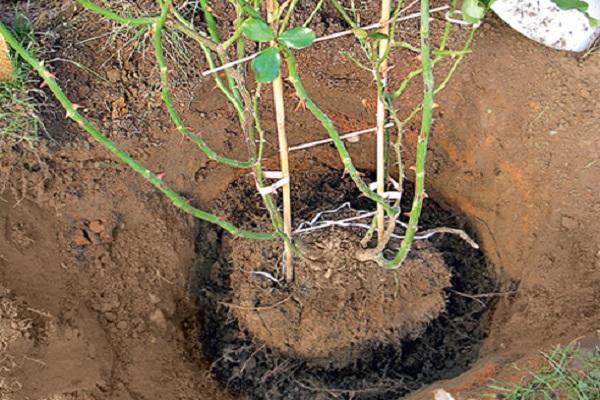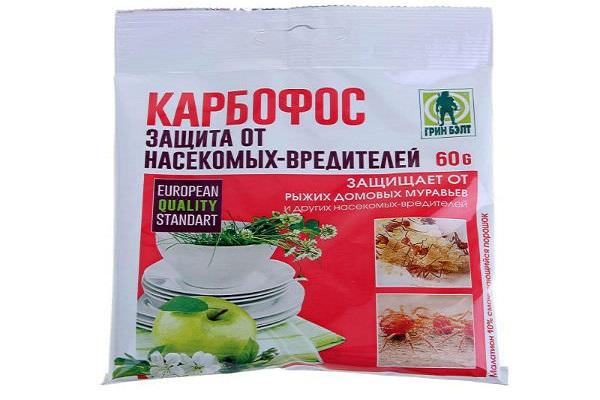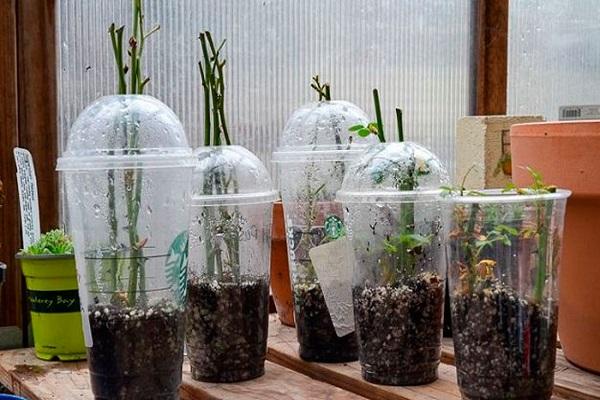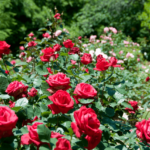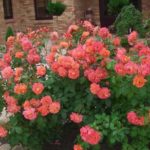Decorating a garden plot with a Robusta rose allows you to make a bright accent in the landscape composition. The contrast of bright flowers against the background of dark foliage creates a special charm. The planting requires minimal maintenance and is considered unpretentious to environmental conditions.
- Description and characteristics of the Robusta rose
- Advantages and disadvantages
- How to grow flowers correctly
- When and where to plant?
- Selection and preparation of planting material
- Landing technology
- Further care of the plant
- Watering
- Tillage
- Fertilizer
- Trimming
- Transfer
- Preparing for winter
- Methods of controlling diseases and pests
- Flowering and dormancy
- Reproduction methods
- Using roses in landscape design
Description and characteristics of the Robusta rose
The main pronounced feature of the variety is the bright scarlet color of the petals. Flowers are formed on spreading bushes with powerful shoots, which must be taken into account when planting. The park rose Robusta grows up to 1.5 m in height.
Bushes of this variety can be visually recognized by the following characteristics:
- The buds are symmetrical and neatly folded. Small stamens grow on each bud.
- The shape of the buds is oblong, and after blooming, clusters of 7-9 flowers with a light aroma are visible on the roses.
- There are few leaves on the bushes, but they are large, with a wrinkled surface, and a rich green color.
The Robusta variety is divided into the Cordeo and Pink categories. The first variety has increased resistance to frost, but is distinguished by the exquisite appearance of its buds. The second variety is characterized by the presence of pink flowers, but caring for them requires compliance with certain features.
Advantages and disadvantages
A large number of advantages have made the variety widespread among gardeners. The main positive aspects include the following:
- resistance to frost, which allows the use of minimal shelter for the winter period;
- long flowering, which begins in early spring and ends after the first autumn frosts;
- continuous opening of buds even with frequent precipitation or exposure to hot sun.
Considering the shortcomings, it is worth highlighting the lack of resistance to diseases and pests. Another disadvantage is that the branched shoots are covered with sharp thorns, so you have to use gardening gloves when caring for plants.
How to grow flowers correctly
Planting Robusta roses requires compliance with a number of rules.An integrated approach to growing plants simplifies subsequent care and promotes active growth and development of bushes.
When and where to plant?
Robusta rose grows well on soil with a simple composition, but landscaping the site can improve flowering. The best option is medium loamy soil, consisting of turf, humus and sand in a ratio of 2:2:1. It is advisable that the place be illuminated or semi-shaded.
It is recommended to carry out planting work in early spring, but after the risk of return frosts has disappeared.
Plants will be able to quickly adapt to new conditions and begin to actively develop.
Selection and preparation of planting material
Rose seedlings must have healthy roots and stems with a smooth surface. It is also important to ensure that there are no visible signs of damage. A few hours before planting, the seedling is soaked in a root formation stimulator.
Landing technology
For planting, prepare a hole 60 cm deep and 70 cm in diameter. Expanded clay is placed at the bottom of the hole and standard complex fertilizer is applied. The roots of the plant are immersed in the hole and covered with soil. When completing planting, water the planting and mulch the area around the tree trunk.
Further care of the plant
Proper flower care promotes abundant flowering. Standard care involves performing a set of agrotechnical practices.
Watering
The soil under the bushes is moistened as the top layer dries. As a rule, it is enough to water the plantings once a week, spending 10-15 liters of water per bush.
Tillage
Preventative treatment reduces the risk of disease development and pest damage. Insecticides and fungicides are used to spray the soil.
Fertilizer
Once a year, the bushes are fertilized with compost or humus, spreading the fertilizer as mulch and gradually incorporating it into the soil while loosening. Additionally, fertilizing with mullein solution is required. The soil is watered with liquid fertilizer in May and August.
Trimming
During the formation of bushes, old, weak and rotten shoots are removed. It is recommended to carry out formation in spring and early autumn.
Transfer
The plant should be moved to a new location in early spring or late summer. The rose must be carefully dug up along the projection of the crown, capturing the largest possible lump of earth. Then the planting is placed in a new planting hole, the conditions in which will be close to the previous ones for rapid adaptation.
Preparing for winter
Despite the resistance of the Robusta variety to frost, preparation for winter is required. Above-ground structures made of spruce spruce branches and non-woven material allow plants to be protected. It is enough to bend young bushes to the ground and cover them with spruce branches without using film.
Methods of controlling diseases and pests
Unfavorable conditions and violations of care rules lead to diseases and insect damage. When growing roses you may encounter the following problems:
- Aphid attack. Insects gnaw through succulent leaves, and to eliminate parasites they are treated with Karbofos or Fitoverm.
- Rust. As a result of the disease, rusty spots appear on the leaves. Treatment requires spraying with a fungicide.
- Powdery mildew. The disease affects the above-ground parts of bushes in conditions of high humidity. A sign of the disease is a white-gray coating on flowers and leaves. Powdery mildew can be eliminated using fungicidal preparations.
Flowering and dormancy
The Robusta variety blooms from early spring until autumn frosts.The rest of the time the plant remains dormant, but does not wither or die. With the onset of warmth, active growth resumes.
Reproduction methods
You can increase the number of bushes on the site by propagation. To do this, the easiest way is to divide the bushes and root cuttings or shoots in the ground.
Using roses in landscape design
Rosa Robusta is suitable for single planting or as a hedge. This variety can be combined in landscape design with most evergreen and flower crops.


